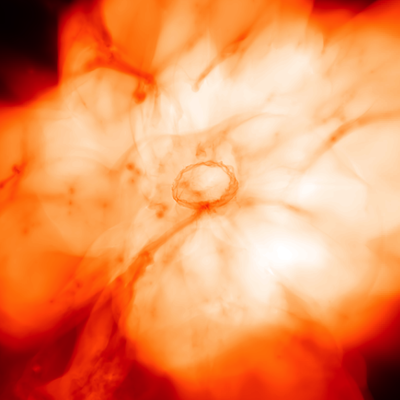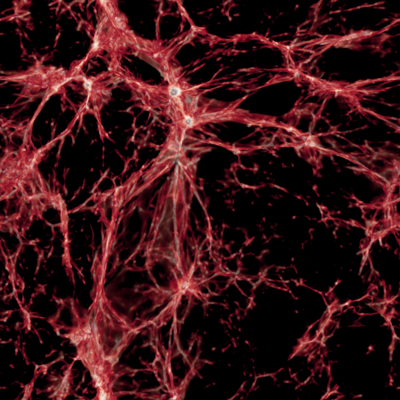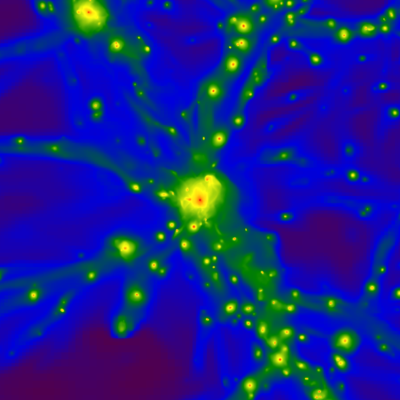
Research
The study of cosmic structure formation technically includes all known physical processes, but in rough order of importance, it is the combination of an expanding universe, gravity, fluid dynamics, and atomic physics. I work on areas of structure formation that range in scales from the size of the solar system (a light year or so) to tens of millions of light years. For movies and high resolution images from my work, check out my resources page.
The First Stars, First Metals, and Second Stars
The universe formed with almost no elements other than Hydrogen and Helium. Because of this unique chemical composition, the stars that formed out of this gas were very different from the stars that formed today. They were likely much more massive and died violent and possibly quite exotic deaths. Their supernova explosions created the first heavy elements, which changed forever the way gas was able to collapse and form stars. I study how the next generation of stars formed amidst these first metals and how the process of star formation evolved to create the stars we observe today. Have a look here for some recent work I've done!

The Intergalactic Medium and the Missing Baryons
To observe the universe on large scales is to observe a sea of galaxies of many shapes and sizes. Yet, galaxies only make up about 10% of all normal matter (as opposed to dark matter.) The rest is distributed over the incredibly vast distances in between galaxies, comprising what is known as the intergalactic medium. The intergalactic medium is observable in the distant, and hence early, universe through the absorption of light by neutral Hydrogen. Adding up all of the observable matter (galaxies and the intergalactic medium) in the early universe yields a number that is consistent with other measurements of the total baryon (normal matter) content. However, a similar census performed in the local universe can only find roughly half of what should be there. Simulations, like the ones I run, have shown that these missing baryons are still in the intergalactic medium, but have been heated to temperatures too hot to be observable through absorption of Hydrogen. I use simulations to investigate how the intergalactic medium has evolved over the history of the universe and to seach for ways in which these missing baryons might be detected.

Galaxy Clusters as Extreme Galactic Environments
As per their name, galaxy clusters are primarily identified as dense collections of galaxies. However, the reality is that those galaxies are just tip of a single, incredibly massive iceberg made of dark matter. In fact, galaxy clusters are the largest coherent objects in the universe. The intergalactic medium within galaxy clusters, also known as the intracluster medium, is heated to tens of millions of degrees. The hot intracluster gas, the deep gravitational potential of the iceberg, and the high frequency of encounters between galaxies make for a pretty crazy place to grow up as a galaxy. These extreme environments also create significant challenges for theories of galaxy formation as they are the regions in which simulations tend to be the worst at reproducing reality. I search for the physical processes that may not be important in more typical galactic environments, yet may be the key to realistic simulations of galaxy clusters.
